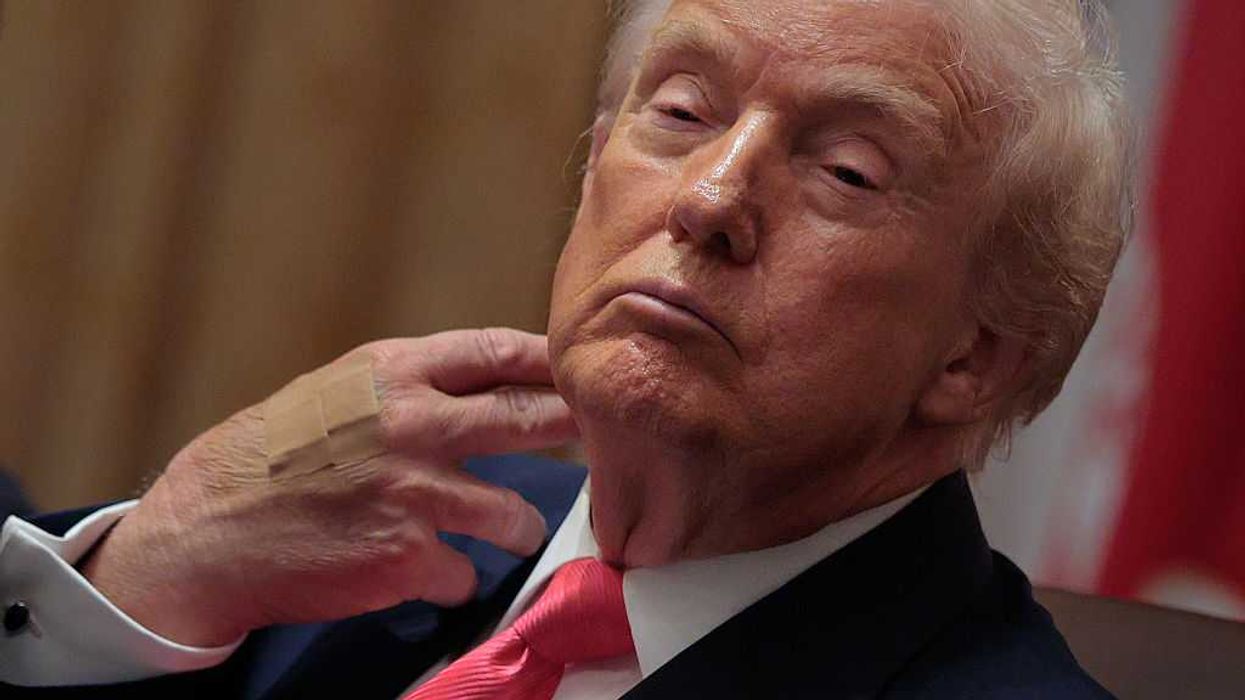Sarat is associate provost, associate dean of the faculty and a professor of jurisprudence and political science at Amherst College.
The reporting done on election night 2018 offers a cautionary tale for the news media as we approach Nov. 3.
Because more than a quarter of that year's 116 million votes were mailed, initial projections of the midterm results turned out to be wildly inaccurate. They showed Democrats making only modest gains in the House, far less than the historical average for the party not in the White House. As Jake Tapper announced on CNN that night, "This is not a blue wave."
Only when all the votes were counted, three weeks later, did Americans learn precisely how wrong that was. The Democrats prevailed by unprecedented margins and picked up many more seats (40 of them) than usual for the out party.
Now, with some 80 million mail-in ballots expected, accurately predicting winners before the count is complete looks to be even more perilous than two years ago. This is because millions of those envelopes will not even have been opened — let alone the contents tabulated — when the news anchors sign off the morning after Election Day.
Absent the sort of landslide that polling doesn't now foresee, it may be many days before enough votes have been counted to make clear whether the winner is President Trump or former Vice President Joe Biden.
As a result, we need new norms to govern what the media does two weeks from now.
All news media, especially cable and broadcast TV, must exercise restraint and avoid the customary scramble to be first to declare a victor. Such caution does not come naturally to many journalists or the organizations where they work. And it runs against the grain of a culture increasingly attuned to receiving instant information, even if it later turns out to be inaccurate.
Yet, for the country to have any chance of avoiding post-election chaos, it is crucial for the media to resist premature declarations.
The race to announce the result, and the dangers of doing so, are not new. In 1948, because of an impending printers' strike, The Chicago Tribune went to press before all the votes were in to get out their morning edition. Editors relied on polls favoring Republican Gov. Thomas Dewey of New York over President Harry Truman and went with the infamous headline, "Dewey Beats Truman."
Four years later TV coverage of election night began in earnest. Right from the start, ABC, CBS, and NBC competed to see which of them would be the first to project the winner.
Each network used new technology to produce what one commentator has called"the illusion of simultaneity," namely the sense that viewers were watching returns tallied in real time.
CBS anchor Walter Cronkite proudly informed viewers that his network would rely on UNIVAC, one of the world's first commercial computers, to determine who won. And, early in the evening, with just over 3 million votes counted, the machine calculated that there was a 99 percent chance that Gen. Dwight Eisenhower would defeat Sen. Adlai Stevenson of Illinois. (It ended up a rout.)
During those early years, networks made such projections based on early returns from "key precincts." By 1980, they had come to rely more on surveys of voters who had just cast ballots. While using key precincts meant projections could not be made until polls closed and some results were tabulated, exit polling could be completed long before all the votes were in.
That year, in fact, the networks knew early on Election Day that Republican Ronald Reagan would win in a landslide. But NBC waited until 8:15 p.m. on the East Coast to announce the results. That was still rush hour on the West Coast, before millions cast their ballots for or against President Jimmy Carter.
One result was that, four years later, the networks agreed to wait until polls closed before projecting a winner. And, since then, some states have tried to discourage the use of exit polling by regulating where and when the necessary surveys could be conducted.
Reliance on polls and computers has remained a staple of what is broadcast on election night. Even the notoriously fumbling, error-filled coverage on election night 2000 did little to change the media's approach.
And now, the night has been made more compelling by computer graphics which offer both a visually appealing spectacle and minute-by-minute updates on the results.
This year, surveys suggest that those preferring Trump are more likely to cast their votes on Election Day while Biden backers will cast their ballots by mail. And so 2020, like 2018, is likely to see a massive "blue switch" as the mail gets opened.
Knowing this, news executives should marshal their self-discipline. They need to refrain from offering viewers the illusion of simultaneity, even if it means that they do not project a presidential victor on Nov. 3. At the very least, they should only declare a winner of a state once there are fewer outstanding votes than the official margin separating Trump and Biden.
Such restraint, particularly after the mistakes of two years ago, might be warranted by simple prudence. But there is a political argument to be made here. Some commentators suggest election night projections will favor Biden. It is more likely that projections of state-by-state winners — if based too much on the in-person tallies — will play into Trump's hands. They will allow him to prematurely claim victory and insist that any further counting of ballots would be fraudulent and illegitimate.
American democracy will not be well served if the media does business as usual, which would make it complicit in a president's unprecedented effort to discredit the election.
As the Society of Professional Journalists Code of Ethics notes, journalists in a democracy should never sacrifice accuracy for speed. They have a duty to "gather, update, and correct information throughout the life of a news story." That will never be more important, for our democracy, than in the weeks ahead.



















